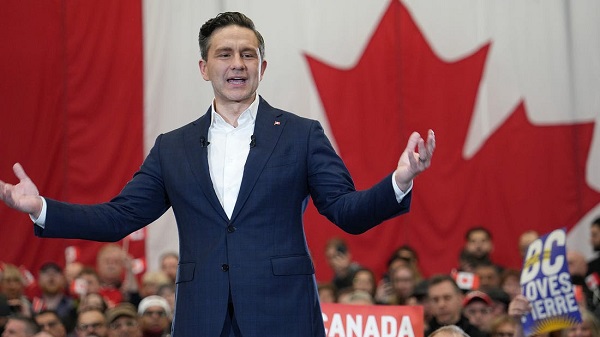Opinion
A good paint and bad engine is an easier sell than a good engine and bad paint.
It is easier to sell a vehicle with a good paint job and a bad drive train than it is to sell a vehicle with a good drive train and a bad paint job. Buyers will over look the blue tinged exhaust but worry about the dime sized rust spot by the rear wheel. Not everyone but I would say the majority.
Sales people and politicians know this. Voters will vote for the fancy platform over the more substantive policy based platform. Former Prime Minister Kim Campbell is known for declaring elections are not the time to discuss policy. Between elections our politicians, generally, are invisible and voters are busy with their lives, so between elections policy is not discussed.
This October 16, we will be having our municipal elections, we will hear much about our downtown, the Riverlands, our trail systems like all the past elections, and we will hear much about the 2019 Winter Games.
The Winter Games is the paint job while our decreasing population is our engine. We will spend $2,000 for every visitor that will visit this city over those 2 weeks, but last year we lost 975 permanent residents. Which is the bigger issue? The city is not doing a census this year, so we will not know if the losses will continue. How much discussion will there be on reversing this trend, or will it all be blamed on the economy?
The five fastest growing cities in Canada are Calgary, Edmonton, Regina, Saskatoon and Lethbridge. They are all in western provinces, affected by the same economy, and Lethbridge is almost the same size as Red Deer. So why did they all grow while Red Deer shrank?
Blackfalds, Penhold, Sylvan Lake all grew while Red Deer shrank, but we are not discussing it, because it is the economy.
Let us delve further into Red Deer’s shrinkage. One third of the residents live north of the river and they lost 777 residents while two thirds of the residents live south of the river and they only lost 198 residents. So the north side is shrinking 8 times faster than the south side of the river. You cannot blame this on the provincial economy.
It might have more to do with the city planning for everything being on the south side. No high schools on the north side and 6 for the south side. 1 recreational complex on the north side, (Dawe Centre) and 10 on the south side ( the Downtown Recreation Centre, Michener Aquatic Centre, Downtown Arena, Centrium complex, Collicutt Recreation Centre, Pidherney Curling Centre, Kinex Arena, Kinsmen Community Arenas, Red Deer Curling Centre, and the under-construction Gary W. Harris Centre. The city is also talking about replacing the downtown recreation centre with an expanded 50m pool).
There will be few words or thoughts given to our bad engine and many offered about the winter games paint job.
Reminds me of the Rio Olympic Games, it emphasized the class differences, burden placed on the populace for the benefit of the few, and I did not hear of any mass migrations to Rio after the games. I did hear about the long term debt carried by the forgotten masses. I have no belief that our 2019 Winter Games will be the panacea for our declining population and economy in Red Deer.
Will we discuss the exiting from our downtown, businesses relocating to the county’s Gasoline Alley? No, probably not. because that is too negative while the trails have more positive spins and recognition. Though not because of the actions of our politicians now but from the actions of politicians long forgotten.
I think I see in my mind’s eye a lot of politicians taking note of the paint jobs but I do not see many lifting the hood. I really hope that I will be proven wrong, but if history is anything to go by, I won’t be. Fingers crossed.
John Stossel
Government Gambling Hypocrisy: Bad Odds and No Competition

From StosselTV
Many politicians across America condemn gambling. They crack down on slot machines and want sports betting banned. Yet, there’s one gambling operation they never try to ban: their own!
The politicians’ hypocrisy is disgusting. They should leave us alone. How we spend our money should be up to us!
After 40+ years of reporting, I now understand the importance of limited government and personal freedom
——————————————
Libertarian journalist John Stossel created Stossel TV to explain liberty and free markets to young people.
Prior to Stossel TV he hosted a show on Fox Business and co-anchored ABC’s primetime newsmagazine show, 20/20. Stossel’s economic programs have been adapted into teaching kits by a non-profit organization, “Stossel in the Classroom.” High school teachers in American public schools now use the videos to help educate their students on economics and economic freedom. They are seen by more than 12 million students every year.
Stossel has received 19 Emmy Awards and has been honored five times for excellence in consumer reporting by the National Press Club. Other honors include the George Polk Award for Outstanding Local Reporting and the George Foster Peabody Award.
—————————
To get our new weekly video from Stossel TV, sign up here: https://www.johnstossel.com/#subscribe
—————————
Alberta
Alberta’s embrace of activity-based funding is great news for patients

 From the Montreal Economic Institute
From the Montreal Economic Institute
Alberta’s move to fund acute care services through activity-based funding follows best practices internationally, points out an MEI researcher following an announcement made by Premier Danielle Smith earlier today.
“For too long, the way hospitals were funded in Alberta incentivized treating fewer patients, contributing to our long wait times,” explains Krystle Wittevrongel, director of research at the MEI. “International experience has shown that, with the proper funding models in place, health systems become more efficient to the benefit of patients.”
Currently, Alberta’s hospitals are financed under a system called “global budgeting.” This involves allocating a pre-set amount of funding to pay for a specific number of services based on previous years’ budgets.
Under the government’s newly proposed funding system, hospitals receive a fixed payment for each treatment delivered.
An Economic Note published by the MEI last year showed that Quebec’s gradual adoption of activity-based funding led to higher productivity and lower costs in the province’s health system.
Notably, the province observed that the per-procedure cost of MRIs fell by four per cent as the number of procedures performed increased by 22 per cent.
In the radiology and oncology sector, it observed productivity increases of 26 per cent while procedure costs decreased by seven per cent.
“Being able to perform more surgeries, at lower costs, and within shorter timelines is exactly what Alberta’s patients need, and Premier Smith understands that,” continued Mrs. Wittevrongel. “Today’s announcement is a good first step, and we look forward to seeing a successful roll-out once appropriate funding levels per procedure are set.”
The governments expects to roll-out this new funding model for select procedures starting in 2026.
* * *
The MEI is an independent public policy think tank with offices in Montreal, Ottawa, and Calgary. Through its publications, media appearances, and advisory services to policymakers, the MEI stimulates public policy debate and reforms based on sound economics and entrepreneurship.
-

 Podcasts2 days ago
Podcasts2 days agoTrump’s Tariffs: The US, Canada, and the rest of the world
-

 Alberta2 days ago
Alberta2 days agoProvince introducing “Patient-Focused Funding Model” to fund acute care in Alberta
-

 2025 Federal Election2 days ago
2025 Federal Election2 days agoMark Carney Comes to B.C. and Delivers a Masterclass in Liberal Arrogance
-

 2025 Federal Election2 days ago
2025 Federal Election2 days agoPoilievre to invest in recovery, cut off federal funding for opioids and defund drug dens
-

 Alberta1 day ago
Alberta1 day agoMedical regulator stops short of revoking license of Alberta doctor skeptic of COVID vaccine
-

 Business2 days ago
Business2 days agoTrump threatens additional 50% tariffs on China, urges ‘patience’
-

 International1 day ago
International1 day agoUN committee urges Canada to repeal euthanasia for non-terminally ill patients
-

 MacDonald Laurier Institute1 day ago
MacDonald Laurier Institute1 day agoRushing to death in Canada’s MAiD regime





